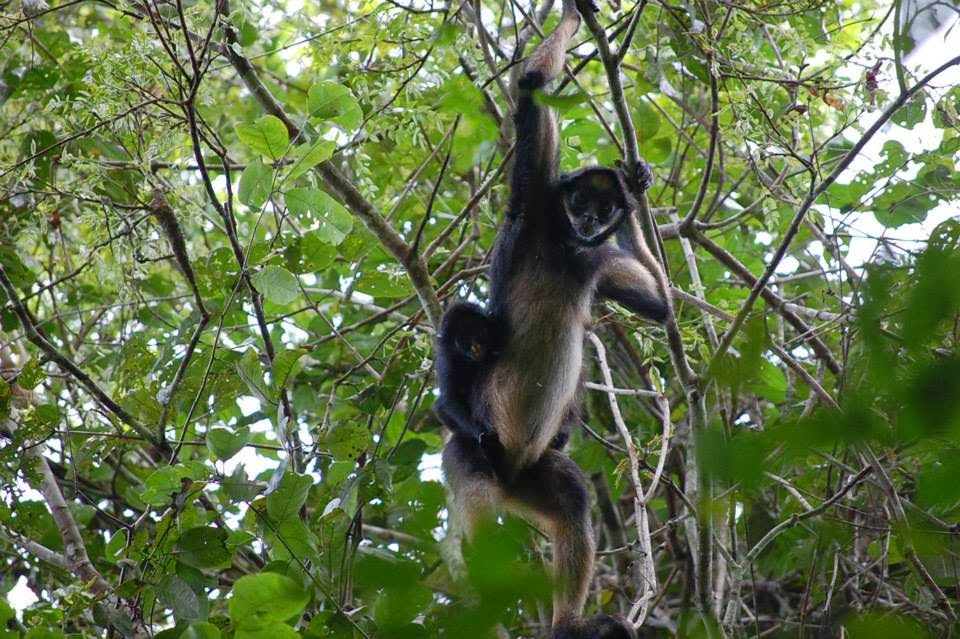The only thing that isn't so great about staying here is that I will miss my graduation ceremony and my roommates moving out of our apartment at CMU. The finch project is a once-in-a-lifetime kind of opportunity so I couldn't turn it down, but I am a little upset that I won't really get a sense of closure from college. I am currently in my last class of my undergraduate degree, which is pretty shocking. I am glad I get to finish here, but I also wish I could give CMU a more proper goodbye.
I've been up to a lot lately, which is why I haven't had time to post. I have gone on two dives, went back to Santa Cruz island for a field trip, watched a lunar eclipse from a cliff over the ocean, and have been enjoying the islands as much as I possibly can as this is probably the last time I will ever see them.
Our first dive was at Kicker Rock or Leon Dormido (sleeping lion). This is a huge rock that juts out of the ocean a few miles away from San Cristobal. I saw incredible fish, corals, sponges, sharks, and sea turtles here. It was so beautiful.
 |
| Me underwater! |
 |
| A huge school of fish next to the rock. |
Our next dive was a night dive, and it was my favorite one. The bottom of the ocean looks so different during the night, where you can see tons of spiny lobsters, sea cucumbers, scorpion fish (which are super poisonous), and other unique fish. We even saw a moray eel under a rock which was awesome! When we were coming up from our second dive of the night, the bioluminescence, which is caused by microscopic animals that light up when you disturb the water, was incredible. The only apt description I can think of was that it looked like I was swimming through the galaxy with little points of light swirling all around me. I will never forget those moments when we turned off our flashlights and swam around in the stars.
Now that I've been in Galapagos for almost three months, I can really see what this place is all about. Most people come here for a week or two, see the incredible wildlife and gorgeous landscape, and remember it as an enchanted place. I certainly am going to take that away from this trip, but having been here for so long, I see that there is a lot more to Galapagos than meets the eye. Socially and environmentally, there are a lot of big issues with the islands. For instance, there is a lot of corruption in the government here that makes it difficult to preserve the ecosystems as well as many people would like them to. As the population on the islands have grown so fast, the government hasn't been able to keep up with all the changes to the islands. For instance, the beautiful beach I went to on my first day here is actually a dumping ground for untreated sewage in the ocean. You can't see these things on the surface, but underneath there are a lot of problems that make the islands a little less enchanted. Additionally, something that really frustrates me is the "machismo" culture in Ecuador. Women are very marginalized on the islands, and there are incredibly high infidelity rates among men, divorce rates, and number of HIV/AIDS infected people. This is something that comes along with the culture in general, but it is difficult to accept it when I come from such a privileged point of view. Men here simply harass women for fun, which is very scary and uncomfortable being a foreigner.
I'm not going to guarantee too many posts very soon as I am going to pack these last days with as much as I possibly can. Galapagos has so many amazing things to offer, and I want to take it all in, despite its inevitable flaws.



















































